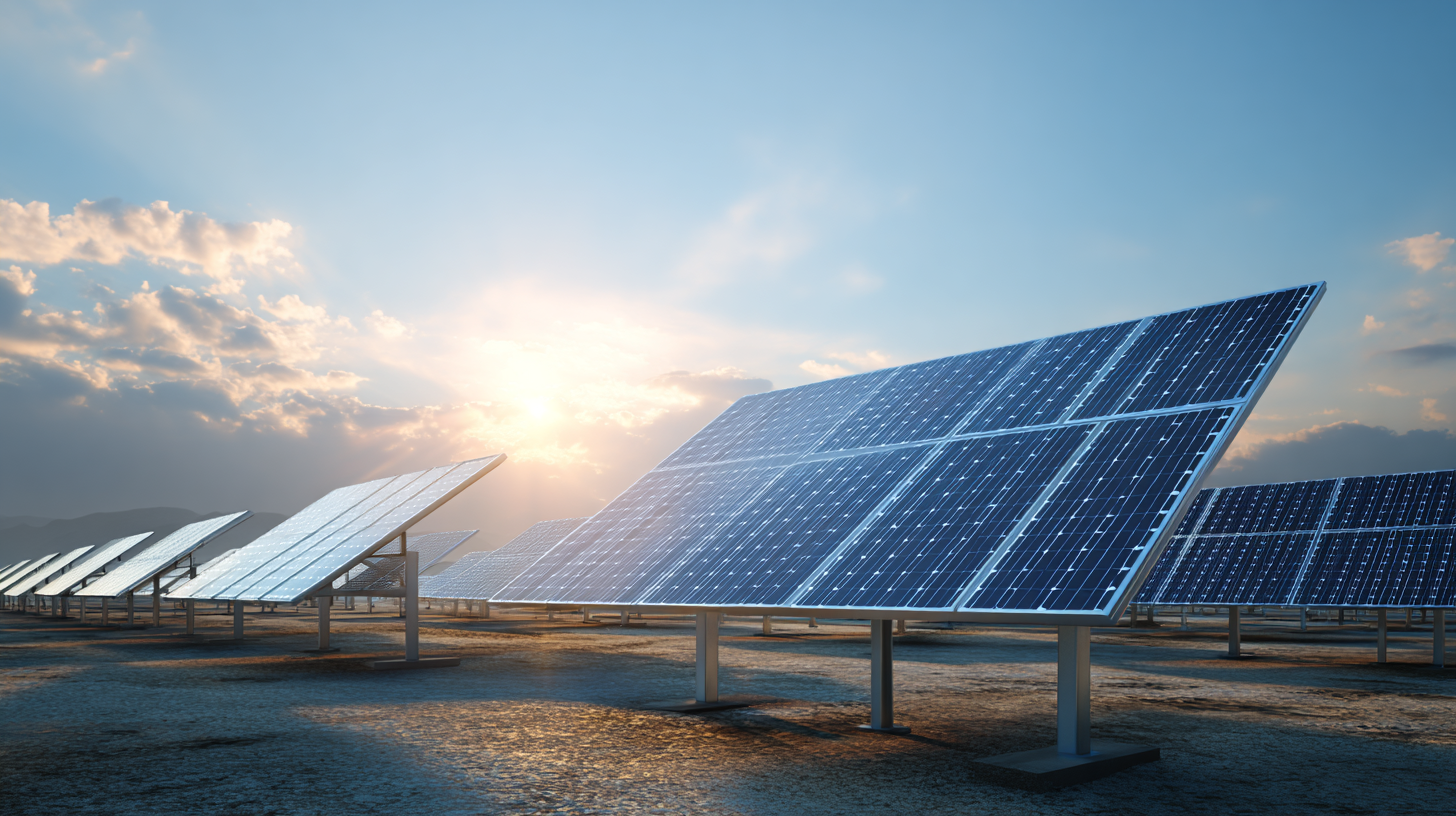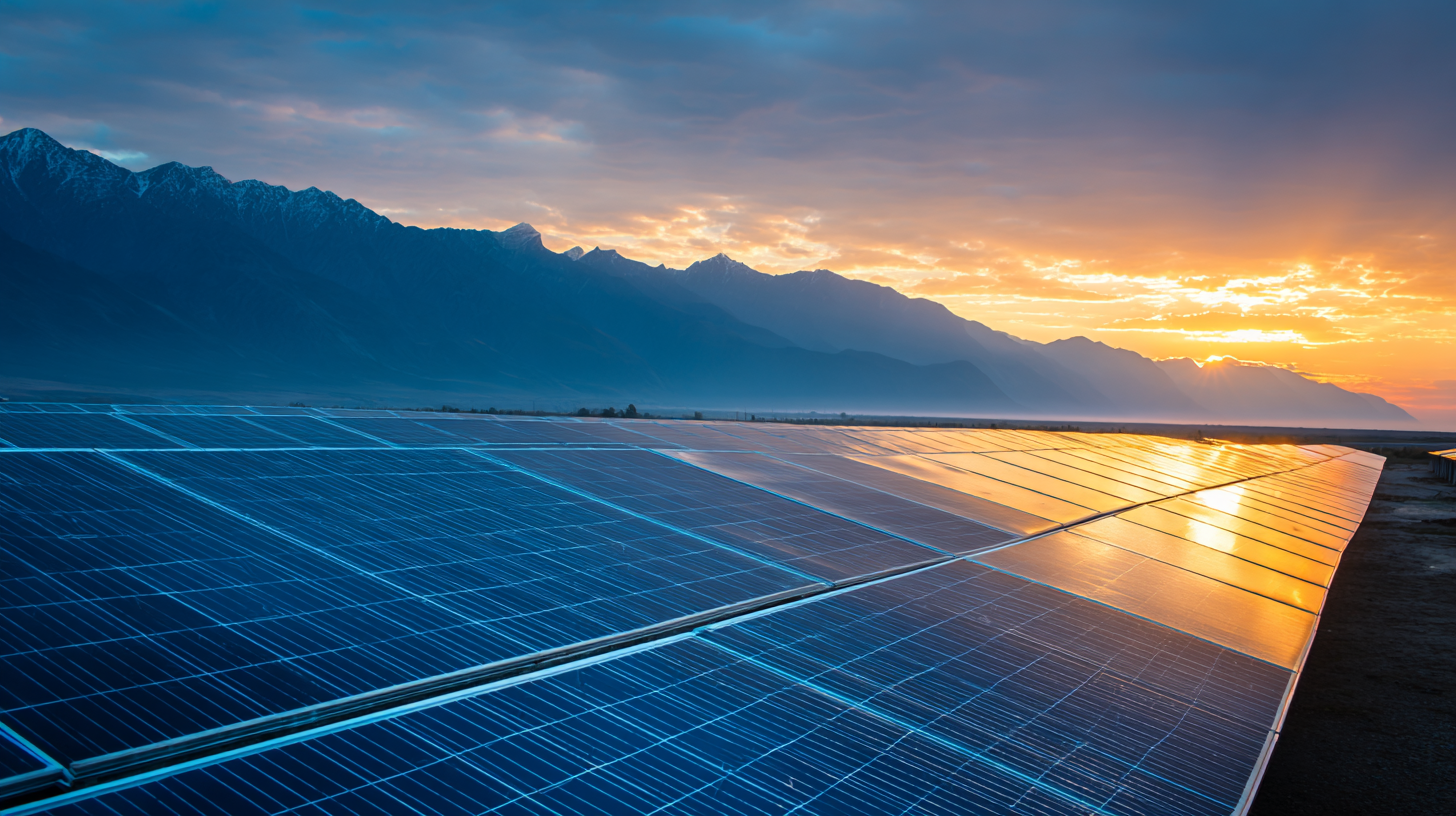Harnessing 2025 Trends in Solar Technology to Choose the Best Solar Panels for Your Energy Needs
As the demand for renewable energy sources continues to rise, the solar industry is experiencing rapid advancements in technology, particularly in the realm of solar panels. According to a recent report by the International Energy Agency, solar power accounted for nearly 20% of global electricity generation in 2021, and this figure is projected to double by 2025. With innovations such as bifacial panels and integrated energy storage systems, choosing the right solar panels for your energy needs has never been more critical.
 Additionally, the emergence of high-quality manufacturing hubs, particularly in China, offers access to cutting-edge products that can maximize energy efficiency and cost-effectiveness. This blog will explore the 2025 trends in solar technology, helping consumers navigate their options and make informed decisions to harness the full potential of solar energy.
Additionally, the emergence of high-quality manufacturing hubs, particularly in China, offers access to cutting-edge products that can maximize energy efficiency and cost-effectiveness. This blog will explore the 2025 trends in solar technology, helping consumers navigate their options and make informed decisions to harness the full potential of solar energy.
Understanding the Key 2025 Trends Shaping Solar Technology Innovations
As we approach 2025, several key trends are shaping solar technology innovations, significantly impacting the selection of solar panels for consumers. According to the International Renewable Energy Agency (IRENA), the cost of solar photovoltaic (PV) systems has decreased by approximately 85% since 2010, making solar energy more accessible than ever. This trend is expected to continue, with projections indicating that solar PV could account for over 30% of global electricity generation by 2025. As a result, it's crucial for consumers to stay informed about the latest advancements in panel efficiency and affordability.
One of the most exciting developments is the rise of bifacial solar panels, which can capture sunlight on both sides, improving energy yield by up to 30% compared to traditional monofacial panels. Additionally, innovations in perovskite technology are expected to enhance conversion efficiencies significantly, potentially surpassing current silicon-based panels. According to a report from the National Renewable Energy Laboratory (NREL), perovskite-silicon tandem cells could achieve efficiencies exceeding 30% by 2025. Understanding these trends will empower consumers to make informed decisions that align with their energy needs and contribute to a sustainable future.
Evaluating Different Types of Solar Panels for Optimal Energy Efficiency
When considering solar technology advancements up to 2025, it's essential to evaluate various types of solar panels to ensure optimal energy efficiency for your specific needs. The three main types of solar panels are monocrystalline, polycrystalline, and thin-film, each with distinct characteristics that can influence your decision. Monocrystalline panels are known for their high efficiency and longevity, making them an excellent choice for homeowners with limited roof space. Their sleek design and superior performance in low-light conditions also enhance their appeal.
On the other hand, polycrystalline panels are often more budget-friendly but generally offer slightly lower efficiency rates. They are ideal for larger installations where space is not a constraint, allowing for a greater number of panels to be installed without compromising the overall energy output. Lastly, thin-film solar panels are the most versatile and lightweight, which can be beneficial for unique roof structures or installations where traditional panels may not fit. However, they tend to require more space and may generate less energy in comparison. By evaluating these options carefully, you can select the best solar panel type that aligns with your energy needs and financial goals, ensuring a sustainable investment for the future.
Harnessing 2025 Trends in Solar Technology to Choose the Best Solar Panels for Your Energy Needs
| Panel Type | Efficiency (%) | Cost ($/W) | Lifespan (Years) | Temperature Coefficient (%/°C) |
|---|---|---|---|---|
| Monocrystalline | 20-22 | 0.75-1.00 | 25 | -0.3 |
| Polycrystalline | 15-18 | 0.65-0.90 | 20 | -0.4 |
| Thin-Film | 10-12 | 0.50-0.75 | 10-15 | -0.2 |
| Bifacial | 18-20 | 0.90-1.20 | 25 | -0.3 |
The Impact of Government Policies on Solar Panel Selection in 2025
Government policies are crucial in shaping the solar panel market, especially as we approach 2025. With renewable energy targets becoming more aggressive, numerous countries are implementing incentives to boost solar panel adoption. For instance, the International Energy Agency (IEA) projects a 25% increase in global solar capacity by 2025, largely driven by favorable regulations and subsidies. This shift not only enhances consumer access but also encourages manufacturers to innovate, leading to more efficient solar technologies entering the market.
When selecting solar panels in 2025, it's essential to stay informed about local and national policies that may affect your choices. Many governments are introducing tax credits and rebates for solar installations, which can significantly offset initial costs. For instance, the U.S. federal solar tax credit provides a 26% deduction for installations completed before the end of 2025.
**Tip:** Always check for the latest government policies in your area to ensure you are making the most informed decision regarding your solar panel investment. Additionally, consider panels that meet or exceed new efficiency standards set by governing bodies to maximize your energy output. As policies evolve, so too will the technology—investing in panels that are eligible for future incentives can lead to long-term savings.

Future-Proofing Your Solar Energy System: What to Consider Today
As the solar energy market continues to grow,
future-proofing your solar energy system has become essential for meeting your long-term energy needs.
When considering solar panel options, it's crucial to look ahead to the trends predicted for 2025 and beyond.
This foresight will help you choose panels that not only perform efficiently today but also adapt to technological advancements and changes in energy demand in the coming years.
One significant trend is the rise of specialized applications like solar-powered refrigerators, which are gaining traction due to their energy efficiency and off-grid capabilities.
With the solar refrigerator market projected to reach $10.15 billion by 2023 and a compound annual growth rate of 7.42% from 2024 to 2031,
it's clear that innovations in solar technology are paving the way for versatile solutions.
When selecting your solar panels, consider how they can support such evolving technologies, ensuring your energy system remains sustainable and adaptable to future advancements.
Cost vs. Performance: How to Choose the Right Solar Panels for Your Budget
When choosing solar panels, the balance between cost and performance is crucial for maximizing your investment. According to the National Renewable Energy Laboratory (NREL), the average cost of solar installations has dropped by about 89% since 2000, making solar technology more accessible than ever. However, while lower-priced panels may initially seem appealing, they often yield less energy efficiency over their lifespan. High-performance panels, such as monocrystalline options, typically boast efficiencies exceeding 20%, which can offset their higher upfront costs with increased long-term savings.
In addition, a recent report from Wood Mackenzie highlights that, while the average price per watt for solar panels has decreased, the most efficient panels can deliver greater wattage output, leading to more savings on energy bills. Consumers should consider their energy needs, available roof space, and local solar incentives when determining their budget. Investing in higher-performance panels may result in a higher initial expenditure, but their durability and efficiency can lead to more significant financial benefits in the long run, ensuring that you choose the right solar panels aligned with your energy requirements.

